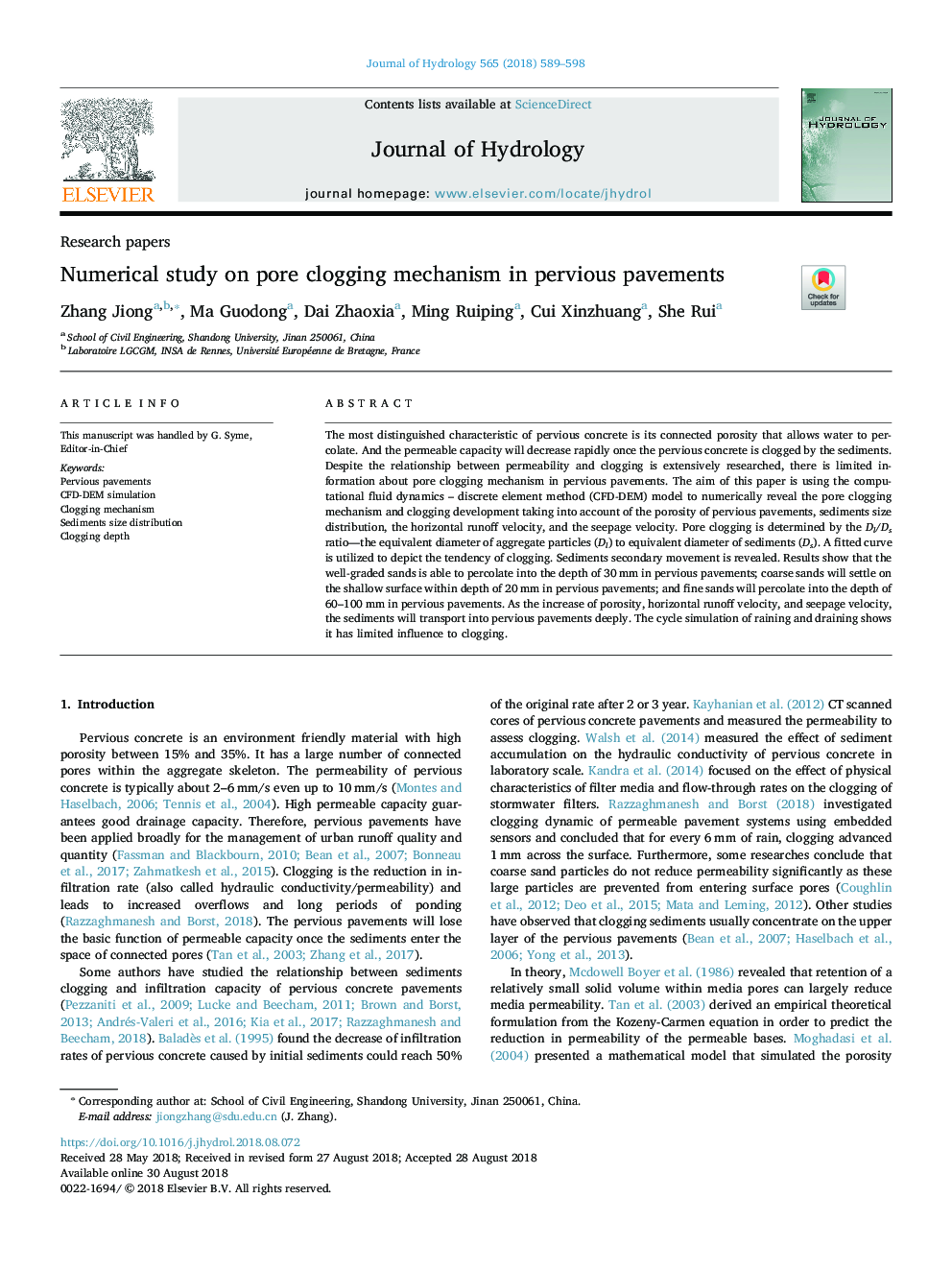| کد مقاله | کد نشریه | سال انتشار | مقاله انگلیسی | نسخه تمام متن |
|---|---|---|---|---|
| 10118246 | 1629889 | 2018 | 10 صفحه PDF | دانلود رایگان |
عنوان انگلیسی مقاله ISI
Numerical study on pore clogging mechanism in pervious pavements
ترجمه فارسی عنوان
مطالعه عددی مکانیسم مسدود شدن منافذ در پیاده روهای پیشین
دانلود مقاله + سفارش ترجمه
دانلود مقاله ISI انگلیسی
رایگان برای ایرانیان
کلمات کلیدی
موضوعات مرتبط
مهندسی و علوم پایه
علوم زمین و سیارات
فرآیندهای سطح زمین
چکیده انگلیسی
The most distinguished characteristic of pervious concrete is its connected porosity that allows water to percolate. And the permeable capacity will decrease rapidly once the pervious concrete is clogged by the sediments. Despite the relationship between permeability and clogging is extensively researched, there is limited information about pore clogging mechanism in pervious pavements. The aim of this paper is using the computational fluid dynamics - discrete element method (CFD-DEM) model to numerically reveal the pore clogging mechanism and clogging development taking into account of the porosity of pervious pavements, sediments size distribution, the horizontal runoff velocity, and the seepage velocity. Pore clogging is determined by the Dl/Ds ratio-the equivalent diameter of aggregate particles (Dl) to equivalent diameter of sediments (Ds). A fitted curve is utilized to depict the tendency of clogging. Sediments secondary movement is revealed. Results show that the well-graded sands is able to percolate into the depth of 30â¯mm in pervious pavements; coarse sands will settle on the shallow surface within depth of 20â¯mm in pervious pavements; and fine sands will percolate into the depth of 60-100â¯mm in pervious pavements. As the increase of porosity, horizontal runoff velocity, and seepage velocity, the sediments will transport into pervious pavements deeply. The cycle simulation of raining and draining shows it has limited influence to clogging.
ناشر
Database: Elsevier - ScienceDirect (ساینس دایرکت)
Journal: Journal of Hydrology - Volume 565, October 2018, Pages 589-598
Journal: Journal of Hydrology - Volume 565, October 2018, Pages 589-598
نویسندگان
Zhang Jiong, Ma Guodong, Dai Zhaoxia, Ming Ruiping, Cui Xinzhuang, She Rui,
